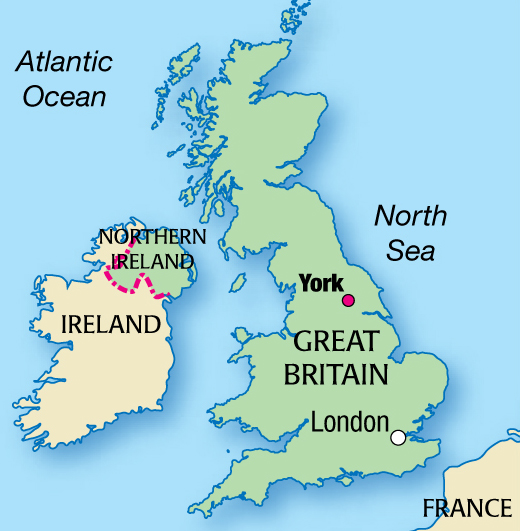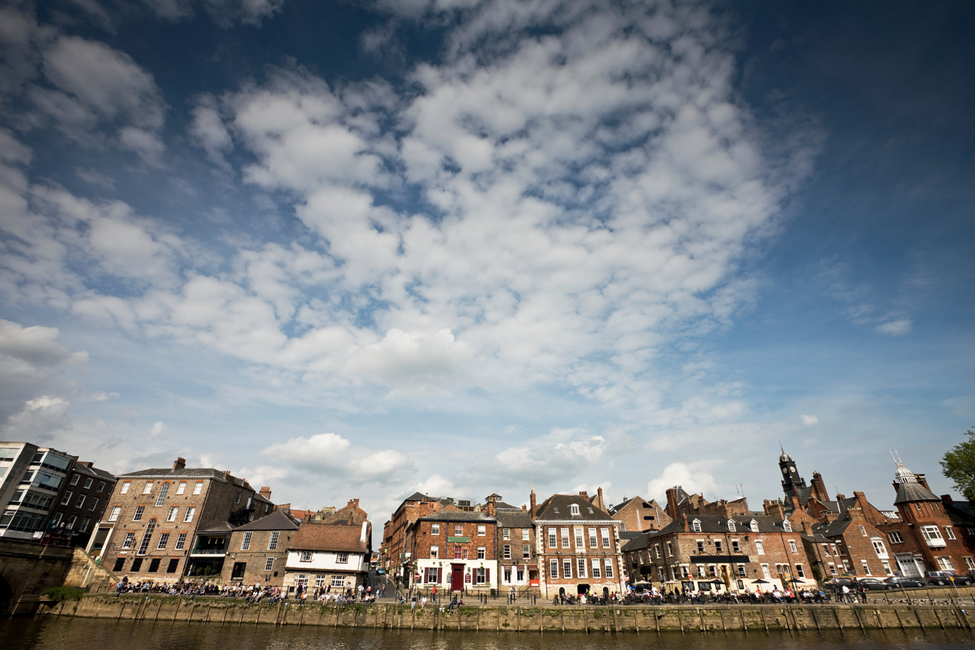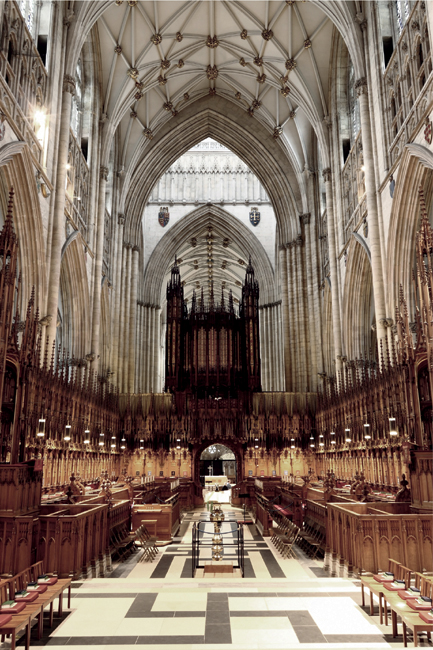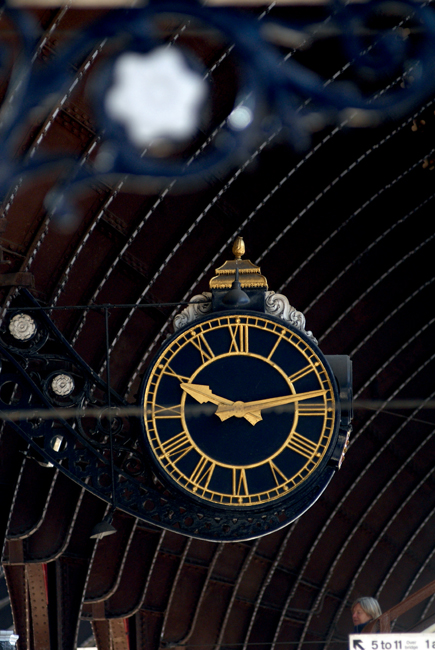
Overview: An Eternal City
York, like Rome, wasn’t built in a day, and this charming little city which bears the imprint of almost 2,000 years of history still manages to keep the fascination alive today
York is a city that encompasses all of England’s history. Encircled by medieval walls and gateways that still bear the scars of battle, its great Gothic cathedral lies surrounded by quaint narrow streets. The bustling life of the golden Elizabethan age can be imagined in the half-timbered houses of the Shambles and the elegance of Georgian England savoured in the sleek lines and fine furniture of Fairfax House. The power and authority of ancient Rome can be glimpsed in the remains of legionary fortress walls, and the all-conquering Vikings have left the wooden walls of their Jorvik settlement in Coppergate. ‘The history of York is the history of England,’ declared George VI.

Along the River Ouse waterfront.
iStockphoto
York has seen invaders come and go. Battles have raged around its sturdy walls and kings and queens have demanded entry at its gates. And the city has withstood them all, though each age has left some legacy of its passing. Happily though, the heart of the city somehow managed to escape the attentions of the Industrial Revolution, with the railway station firmly sited just outside the walls. The result is a very modern ‘medieval’ city; one that is able to illustrate its own intriguing story through its streets, its buildings and its stained glass. It has become a compelling mixture of all former ages with some 21st-century additions. And despite all the temptations created by tourism, it remains a living city – a tourist honey pot yes, but one that resolutely refuses to turn itself into a museum.
Landscape and Location
The city straddles the River Ouse and dominates the Plain of York. It stands halfway between London and Edinburgh and has, since early times, been the home of the Archbishop of York, the Primate of England, who is second only to the Archbishop of Canterbury in the hierarchy of the Anglican Church. When Yorkshire was one county, York was the county town – ideally placed where the three ridings or administrative areas converged. Since 1963 it has also been a university city with a growing reputation as a centre of academic excellence.

Inside the Minster, York’s Gothic masterpiece.
Dreamstime
For the success of its geographical location the city can thank the Romans, who picked the spot with their usual practicality. The Ouse provided them with access to the sea and the confluence with the River Foss gave their fortress water protection on two sides. When the legions marched away, Anglo-Saxon and then Viking invaders saw the strategic convenience of the site and moved in. Centuries later, York was on the coaching route between London and Scotland, and later still George Hudson, the city’s Railway King, made certain that the main line north passed his city.
Economy
York’s road and river links quickly established it as a trading centre. Even in Roman times, ships with wine from Bordeaux were docking at its quays. Medieval merchants set up a powerful Merchant Adventurers’ trading company. Specialist markets dealing in butter, meat, animals and hay so crowded the streets that houses, even church graveyards, were demolished to give the traders more room. For miles around, York was the place to go to sell and buy.
But the city slowly lost out economically to the industrial towns of the West Riding. York came to rely on a mixture of railways and chocolate for its prosperity. Two famous confectionery firms, Rowntree and Terry’s, were the main sources of employment, along with the building of railway coaches at the headquarters of the London and North Eastern Railway Company. For a time, York became a backwater and assumed a genteel shabbiness before making a post-war revival through tourism – an industry which now pours millions of pounds into the city.

The clock at York’s 19th-century railway station.
APA William Shaw
Pedestrian Heaven
Such was the concern that historic cities could be destroyed by commercial pressures that in 1968 York was chosen for a special study by the town planner Viscount Esher. Not all his ideas were adopted, but gradually city-centre traffic was controlled, then excluded – a far-seeing move that makes the York of today a pedestrian-friendly, clean, green city, with a well-organised park-and-ride scheme.
Archaeology
Ironically, it is York’s past that has provided the basis for its present prosperity. Knock down any building in central York and you will find another underneath it – each presenting a perfect opportunity for finding out more about the city’s history.
Over the years organisations and individuals have fought hard to preserve the city. In the early 19th century, the city fathers wanted to pull down the Bar Walls and sell off the stone, and there was pressure for the removal of ancient gateways, which were considered obstacles to trade. Protest groups saved the gateways but not all the barbicans: only one survives, at Walmgate.
York was fortunate not to be badly scarred by post-World War II reconstruction work. The York Civic Trust led a battle to protect the city’s old buildings from demolition and proposed instead careful renovation and adaptation to new uses. Their plea was to preserve the city’s uniqueness.
The York Archaeological Trust has proved the value of ‘rescue archaeology’, where archaeologists are given time to dig ahead of new building work. When Viking York was discovered under Coppergate, the Trust showed that archaeology, far from holding up development, could lead to profitable commercial ventures. The Jorvik Viking Centre, created by the Trust on the site of the dig, has paid for itself. Thanks to the Archaeological Trust a great deal of light has also been shed on the Dark Ages in York. Information has been gathered from seeds, pollen, fragments of bone, pieces of wood – even snail shells. The eating habits and lifestyle of Viking York have been revealed through the richness of its floor ‘droppings’.
Hungate, an area to the east of the city centre, was the most recent area to be excavated and its findings are on show at DIG. Completed in 2011, it revealed fascinating artefacts that add even more to the story of the history of York.